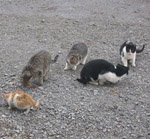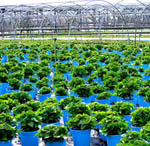Study links exotic plant invasions with residential development
 Development,
Development,  Invasive
Invasive  Suburban sprawl in Colorado Springs, Colorado. Image credit, David Shankbone.A new study links residential development with exotic plant invasions. Gregorio Gavier-Pizarro and fellow researchers looked at the distribution of invasive plants at the county level across the six states of New England and compared the data with a number of anthropogenic and environmental variables.
Suburban sprawl in Colorado Springs, Colorado. Image credit, David Shankbone.A new study links residential development with exotic plant invasions. Gregorio Gavier-Pizarro and fellow researchers looked at the distribution of invasive plants at the county level across the six states of New England and compared the data with a number of anthropogenic and environmental variables.
They found that the number of exotic species that had invaded a county was strongly correlated with two types of housing development:
1) Low density residential development, i.e. a mixture of constructed and vegetated areas (e.g. single-family houses); and
2) Development at the wildlife-urban interface, i.e. low and high density residential development right at the edge of natural areas.
Conversely, other variables such as the amount of agricultural land, urban development, and roads were only weakly correlated with invasive species richness at the county level. From a conservation perspective, this study is important for a few reasons:
1) The study provides additional empirical support for what many conservationists already know - residential development serves as a vector for invasive species. Given that exotic plants cost the U.S. about $25 billion per year, being able to show this connection gives conservationists a strong argument for controlling where growth happens.
2) Past study results suggest that, at a fine scale, housing can cause the spread of invasive species through both propagule pressure (e.g. through the spread of ornamentals from landscaping) and the disturbances from homes (e.g. edges, soil exposures, trails) that create favorable microclimate for weed establishment. The authors conclude that the results of this new study suggest a link between those fine scale influences and landscape level patterns.
However, in my opinion, this finding is a little less certain given the coarse scale of analysis of the study. At the county level, residential development goes hand-in-hand with watershed-scale disturbances that may explain the pattern of weed invasion better than the cumulative effect of fine-scale influences like landsaping.
3) The authors conclude that their research approach can be used to anticipate where future weed infestation is likely to happen and take preventative measures. In addition, this information can used to direct the path of development away from high-risk areas (e.g. rural locations on the interface with natural areas) and towards lower-risk places (e.g. existing urban areas).
--Reviewed by Rob Goldstein
Gavier-Pizarro, G., Radeloff, V., Stewart, S., Huebner, C., & Keuler, N. (2010). HOUSING IS POSITIVELY ASSOCIATED WITH INVASIVE EXOTIC PLANT SPECIES RICHNESS IN NEW ENGLAND, USA Ecological Applications DOI: 10.1890/09-2168




Reader Comments